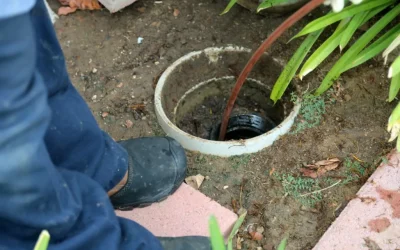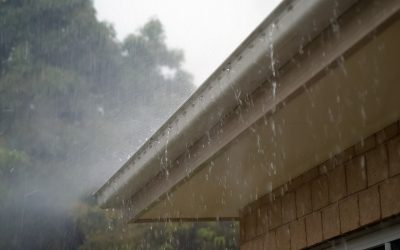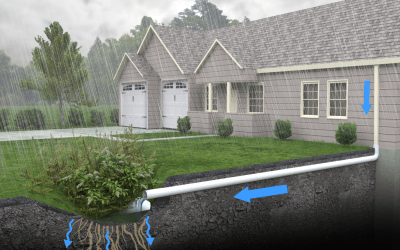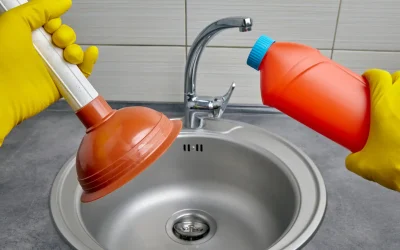In places like Queensland, heavy rain and unpredictable weather are just part of everyday life. But when your stormwater systems fail, the consequences can be extremely costly. Understanding who is responsible for stormwater drains is CRITICAL for homeowners who care about protecting their property and maintaining good relationships with neighbours.
In our exclusive guide, we outline the key responsibilities for property owners and councils – helping you navigate stormwater management the right way.
1. Homeowners are responsible for on-property stormwater systems
You’re a property owner – that makes you accountable for the stormwater infrastructure within your property’s boundaries. This includes:
- Gutters
- Downpipes
- Stormwater pipes
- Gully pits
- Any other drainage components.
Regular – and preferably professional – maintenance is crucial to prevent stormwater blockages and ensure efficient water flow. Neglecting these duties can lead to water damage and potential disputes with neighbours.
2. Councils manage public stormwater infrastructure
Local councils are typically responsible for stormwater systems beyond private property lines. This encompasses:
- Roadside gutters
- Public stormwater drains
- Drainage easements.
If issues arise with these public systems, such as blockages or damage, it’s always the council’s duty to address them. However, homeowners must ensure their property’s drainage connects properly to these systems and doesn’t cause any obstruction.
3. Understanding drainage easements
One of the most common misunderstandings in Queensland is around blocked drains outside, who is responsible. Well, let’s get into this:
A drainage easement is a designated area on private property that allows for the passage of stormwater. While the land remains under private ownership, the easement must remain unobstructed to facilitate water flow.
Homeowners are responsible for maintaining these areas, ensuring they are free from:
- Debris
- Structures
- Or vegetation that could impede drainage.
Unauthorised alterations can lead not only to legal consequences but also make your flooding issues even worse!
4. Natural overland flow – A shared responsibility
Here in Queensland, natural overland flow refers to the movement of water across land due to rainfall. Property owners are generally required to accept natural overland flow from higher properties. However, if an upstream neighbour alters their land in a way that changes the natural flow, such as through landscaping or construction, they may be held responsible for any resulting damage.
Disputes over such issues often require civil resolution, as councils have limited authority in these matters.
5. Legal points of discharge are mandatory
Stormwater from your property must be directed to a lawful point of discharge. Acceptable discharge points include:?
- Kerb and channel at the street front
- Inter-allotment drainage systems
- Council-controlled drainage easements or reserves
- Engineered on-site disposal systems, like absorption trenches.
Connecting to these points often requires council approval, especially for new constructions or if you’re making significant alterations. So, blocked sewer drain who is responsible? It’s complicated, but failure to comply can result in penalties and exacerbate drainage problems.?
6. Stormwater & sewer systems must remain separate
It’s very important to keep stormwater and sewer systems distinct.
Directing stormwater into the sewer system is illegal and can overwhelm sewage treatment facilities, leading to environmental hazards.
On the other hand, sewage can never enter stormwater systems, as this contaminates our waterways and makes life worse for all of us!
If you’re facing issues like a blocked sewer drain or something similar, figuring out who is responsible depends on where the blockage is actually occurring.
Generally, property owners like you are purely responsible for blockages within their property boundaries. And what should the council handle? Anything in the public areas.
7. Storm water drain covers: Maintenance & safety
Stormwater drain covers, or grates, play a vital role in preventing debris from entering the drainage system. But who’s responsible?:
- Homeowners, just like you, are responsible for maintaining drain covers on their property, ensuring they’re fully intact and free from obstructions.
- Damaged or missing covers pose safety risks and lead to blockages.
PLEASE NOTE: If you notice issues with drain covers in public areas, report them to your local council for prompt attention.
Need expert stormwater solutions?
Managing stormwater in just the right way can be stressful, but it’s absolutely crucial for protecting your property – and the environment around us! If you’re uncertain about your responsibilities or need assistance with stormwater drainage issues, Brisbane Drain Cleaning is always right here to help.
Our Brisbane drain plumbers offer comprehensive services, from inspections to maintenance to repairs and beyond – ensuring your stormwater systems are always functioning as they should. Reach out to Brisbane Drain Cleaning today for reliable, expert solutions – all of them fully tailored to … YOU!







